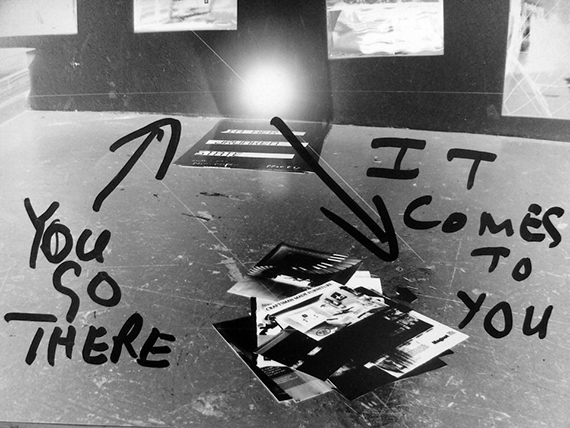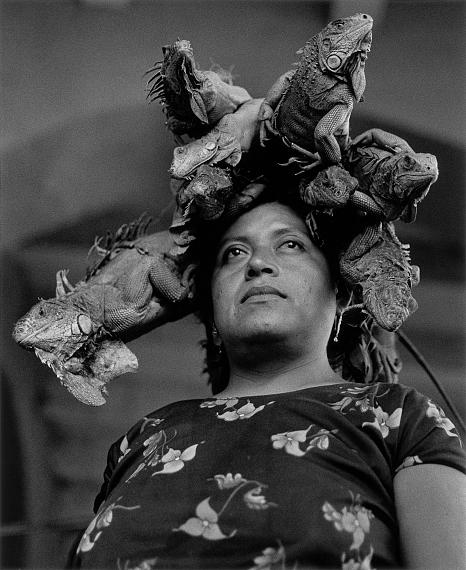
Nuestra Señora de las Iguanas, Juchitán, Mexico, 1979
from the series Juchitán, 1979–1988
© Graciela Iturbide
A Show of Affection – Collection Constellation 1. An exhibition by Fotomuseum Winterthur
Der Sammlung zugeneigt – Konstellation 1 Gastausstellung des Fotomuseum Winterthur
Vito Acconci » Stefan Burger » Forensic Architecture » Lee Friedlander » Matthias Gabi » Nan Goldin » Roc Herms » Jacob Holdt » Margret Hoppe » Graciela Iturbide » Sherrie Levine » Clunie Reid » Anika Schwarzlose » Shirana Shahbazi » Cindy Sherman » Lorna Simpson » Garry Winogrand »
Exhibition: 10 Feb – 20 May 2024
Fotostiftung Schweiz
Grüzenstr. 45
8400 Winterthur
Tue-Sun 11-18, Wed 11-20

Fotomuseum Winterthur
Grüzenstr. 44+45
8400 Winterthur
+41 (0)52-2341060
info@fotomuseum.ch
www.fotomuseum.ch
Tue, Thu, Fri 11-17; Wed 11-20; Sat-Sun 11-18
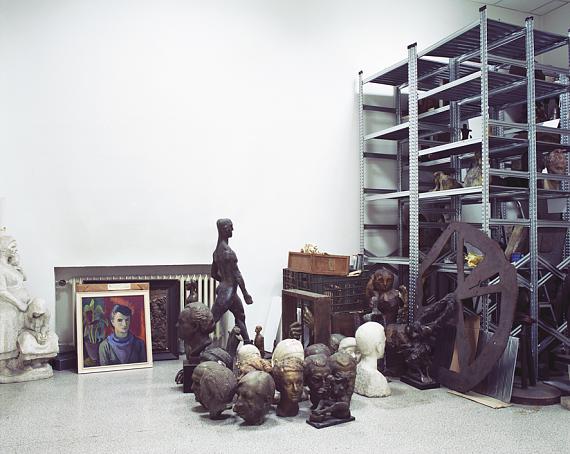
Depot der Nationalgalerie Sofia, 2007
from the series Bulgarische Denkmale
© Margret Hoppe, 2023, ProLitteris, Zurich
A Show of Affection –
Collection Constellation 1
Exhibition: 10 February – 20 May 2024
"Frame by Frame – A Symposium on Collecting Photography"
Friday/Saturday, 17/18 May 2024
Please note: Due to the renovation of Fotomuseum Winterthur, the exhibition will be shown in the spaces of
Fotostiftung Schweiz at Grüzenstrasse 45.
A collection show with a difference: Fotomuseum Winterthur is taking the opportunity
presented by the institution's thirtieth anniversary to examine its own collection.
Drawing on a selection of works from the collection, the exhibition delves into various
themes and issues – from the collection's focal points and the factors that influence its
ongoing development to the gaps and absences that are revealed in it.
"A Show of Affection" offers an alternative to the classic collection exhibition. The non-linear
way in which the exhibition is presented sheds light on numerous aspects of putting
together, developing and maintaining a collection. It is also an expression of the museum's
institutional approach, which is eminently (self-)critical – and yet still has a sense of
affection for its own collection. The exhibition brings together works by a total of 19
different photographers and artists, combining well-known names, such as Lee Friedlander,
Nan Goldin and Shirana Shahbazi, with newly or re-discovered talents like Jacob Holdt,
Anika Schwarzlose and Lorna Simpson.
"Collection Constellation 1" marks the beginning of a series of collection presentations that build on one another and are conceived for different international venues.
The collection of Fotomuseum Winterthur is, among other things, a reflection of its history
as an institution and a chronicle of the exhibitions it has staged. Nan Goldin's work The Sky on the Eve of Philippine's Death is a prime example of how the collection is influenced in important ways by the exhibition programme – other influences include its thematic focuses, social issues and ongoing developments in photographic media and practices. Goldin took the photograph of the sky outside Fotomuseum Winterthur on the eve of the opening of her solo exhibition there in 1997, after she had discovered that a friend of hers had committed suicide. The title of the work derives from this painful event.
Goldin's photographic work can be categorised as documentary/narrative – one of the collection's five focuses. Post-photography, which deploys digital and networked image technologies and media as a mode of artistic expression, has been included, more recently, as another of these focuses. Fotomuseum Winterthur was quick to take an interest in photography from an interdisciplinary perspective, rather than simply seeing it as intrinsically artistic in nature. It also considers its 'fringe areas', in part by integrating works into the collection that challenge the popular understanding of art and photography. This is evident, for example, in a work from the Bomb Cloud Atlas series produced by the Forensic Architecture research group. The work, a 3D model, visualises bomb explosions that occurred during the Syrian war and scientifically reconstructs the event by analysing
visual material taken from the internet. Although Forensic Architecture presents its projects
in museums, they operate as a form of social activism – and thus raise questions about the
function of art.
Sherrie Levine's works are likewise a commentary on the artistic canon. By photographing
the works of male artists like Walker Evans and Alexander Rodchenko, she deconstructs
and criticises the cis-male focus of art history and the history of photography, which
attributes creativity and originality to the male artistic genius, granting women the role of
serving merely as object and muse. The lack of visibility of artists who can be read as
female is also evident in the collection of Fotomuseum Winterthur: 70% of the works in it
are by male artists.
Perspectives from Eastern Europe and the Global South are also under-represented in
the collection. One exception – both in the collection and the exhibition – is Mexican
photographer Graciela Iturbide, whose Juchitán series is featured here. US American photographers, meanwhile, make up 20.7% of the collection. Their dominance is due in
part to the fact that photography was recognised and institutionalised as an art form in the
US in the mid-20th century and the perspective espoused there had a major influence on
its canonisation. But even in this regard there is a large gap that US American artist Lorna
Simpson draws our attention to: the lack of representation of African Americans – both in front of and behind the camera. Simpson's series Summer '57/Summer '09 re-enacts
individual photographs from the private collection of a young Black woman. By picking up
on her seductive poses, she shows how society's ideals of beauty have been shaped by
white bodies in a way that fosters discrimination, while at the same time highlighting the
gaps in the museum's collection and the dominant presence in it of a white gaze.
The museum's current collection concept sets out a road map for the development of its
holdings going forward. It will continue to pursue its five focuses – documentary, narrative
photography; artistic photography that is conceptual in nature and analyses the medium
itself; post-photographic works; works by young photographers; and ephemeral items and
printed objects. This will be accompanied by a regular reassessment of how the idea of
photographic images is evolving. The institution is also seeking to actively counteract
imbalances in terms of the gender and background of the artists included in the collection
and to give visibility to perspectives that have hitherto been under-represented.
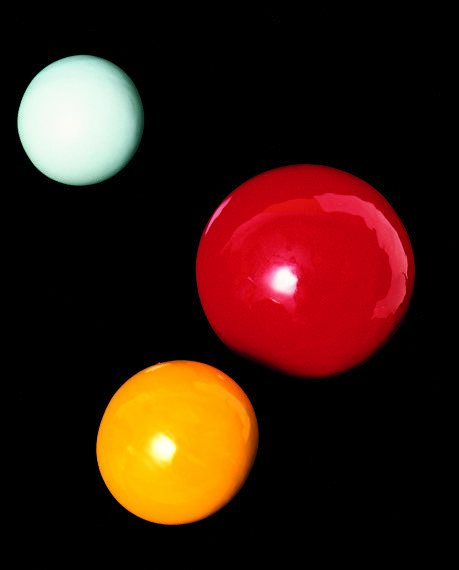
Komposition-40-2011, 2011
© Shirana Shahbazi
Der Sammlung zugeneigt – Konstellation 1
Ausstellung: 10. Februar bis 20. Mai 2024
"Frame by Frame" – Ein Symposium zum Sammeln von Fotografie
Freitag/Samstag, 17./18. Mai 2024
Hinweis: Die Ausstellung wird aufgrund der Sanierung des Fotomuseum Winterthur in den Räumlichkeiten der
Fotostiftung Schweiz an der Grüzenstrasse 45 gezeigt.
Eine Sammlungspräsentation der anderen Art: Das Fotomuseum Winterthur nimmt die 30-jährige Institutionsgeschichte zum Anlass, die eigene Sammlungspraxis zu beleuchten. Anhand exemplarischer Arbeiten aus der Sammlung werden unterschiedliche Thematiken und Fragestellungen vertieft – von den Sammlungsschwerpunkten über die Faktoren, die die Weiterentwicklung der Sammlung beeinflussen, bis hin zu den Lücken und Leerstellen, welche diese offenbart.
"Der Sammlung zugeneigt" bietet eine Alternative zur klassischen Sammlungsausstellung. Die nicht-lineare Präsentation beleuchtet zahlreiche Aspekte der Sammlungsarbeit, -entwicklung und -pflege. Sie bringt zudem eine institutionelle Haltung zum Ausdruck: Das Fotomuseum Winterthur ist durchaus (selbst-)kritisch – und dennoch der eigenen Sammlung zugeneigt. Die Ausstellung vereint Arbeiten von insgesamt 19 unterschiedlichen
Fotograf_innen und Kunstschaffenden – darunter bekannte Namen wie Lee Friedlander, Nan Goldin oder Shirana Shahbazi aber auch Neu- und Wiederentdeckungen wie Jacob Holdt, Anika Schwarzlose oder Lorna Simpson.
"Konstellation 1" bildet den Auftakt einer Serie von Sammlungspräsentationen, die aufeinander aufbauen und für unterschiedliche internationale Gastorte konzipiert werden.
Die Sammlung des Fotomuseum Winterthur spiegelt unter anderem seine Ausstellungsund Institutionsgeschichte. Nan Goldins Werk The Sky on the Eve of Philippine's Death zeigt exemplarisch auf, dass das Ausstellungsprogramm die Sammlung massgeblich prägt – nebst inhaltlichen Schwerpunkten, gesellschaftlichen Themen oder der Entwicklung fotografischer Medien und Praktiken. Goldins Fotografie der Umgebung des Fotomuseum Winterthur entstand am Abend vor der Eröffnung ihrer Einzelausstellung 1997, als sie erfuhr, dass sich eine Freundin das Leben genommen hatte. Das schmerzende Ereignis gab dem Sammlungswerk seinen Titel.
Goldins Arbeiten gehören zur dokumentarisch-erzählerischen Fotografie – einem der fünf Schwerpunkte der Sammlung. Ein neuerer ist die Post-Fotografie, die digitale und vernetzte Bildtechnologien und Medien als künstlerische Ausdrucksformen nutzt. Schon früh interessierte sich das Fotomuseum Winterthur nicht nur aus kunstimmanenter, sondern insbesondere aus interdisziplinärer Sicht für die Fotografie und nahm auch deren "Ränder" in den Blick – unter anderem, indem es Werke in die Sammlung integrierte, die das gängige Verständnis von Kunst und Fotografie herausfordern. Deutlich wird dies beispielsweise an einem Werk aus der Serie Bomb Cloud Atlas der Forschungsgruppe Forensic Architecture. Die Arbeit, ein 3D-Modell, visualisiert Bombendetonationen, die sich im Syrienkrieg ereignet haben, und rekonstruiert das Ereignis wissenschaftlich über die Auswertung von Bildmaterial aus dem Internet. Die Projekte von Forensic Architecture, die zwar im musealen Kontext präsentiert werden, erfüllen einen sozial-aktivistischen Zweck – und werfen so Fragen nach der Funktion von Kunst auf.
Auch Sherrie Levine kommentiert mit ihren Werken den Kunstkanon: Indem sie die Werke männlicher Künstler wie Walker Evans oder Alexander Rodtschenko abfotografiert und dafür die Autorinnenschaft beansprucht, dekonstruiert und kritisiert Levine die cismännlich dominierte Kunst- und Fotografiegeschichte, die dem männlichen Künstlergenie Kreativität und Originalität zuspricht und Frauen lediglich die Rolle als Objekt und Muse zugesteht. Die mangelnde Sichtbarkeit von weiblich gelesenen Kunstschaffenden zeigt sich auch in der Sammlung des Fotomuseum Winterthur: 70% der Werke stammen von männlichen Kunstschaffenden.
Unterrepräsentiert sind in der Sammlung auch Perspektiven aus Osteuropa und dem globalen Süden. Eine der Ausnahmen in der Sammlung und der Ausstellung bildet die mexikanische Fotografin Graciela Iturbide mit ihrer Serie Juchitán. US-amerikanische Fotograf_innen machen hingegen 20,7% der Sammlung aus. Diese Dominanz liegt unter anderem daran, dass die Fotografie in den USA bereits Mitte des 20. Jahrhunderts als Kunstform anerkannt und institutionalisiert wurde und die US-amerikanische Perspektive damit einen grossen Einfluss auf die Kanonisierung ausübte. Doch auch in dieser Perspektive gibt es eine grosse Lücke, auf welche die US-amerikanische Künstlerin Lorna Simpson aufmerksam macht: die fehlende Repräsentation afro-amerikanischer Personen – vor sowie hinter der Kamera. Für ihre Serie Summer '57/Summer '09 stellt Simpson einzelne Fotografien aus dem privaten Bestand einer jungen Schwarzen Frau nach. Indem sie deren verführerische Posen aufgreift, zeigt sie nicht nur, wie Schönheitsideale auf diskriminierende Weise durch weisse Körper geprägt wurden und werden, sondern wirft auch ein Schlaglicht auf die Lücken und den weissen dominierenden Blick in der Sammlung des Fotomuseum Winterthur.
Das aktuelle Sammlungskonzept des Museums dient als Leitfaden für die Weiterentwicklung der Sammlung. Auch in Zukunft werden die fünf Schwerpunkte – dokumentarisch-erzählerische Fotografie; konzeptuelle und medienanalytische künstlerische Fotografie; post-fotografische Arbeiten; Arbeiten junger Fotograf_innen;
ephemere Arbeiten und Druckobjekte – weiterverfolgt und die Entwicklung des Fotografischen immer wieder neu verhandelt. Zudem versucht die Institution dem Ungleichgewicht in Bezug auf Geschlecht oder Herkunft aktiv entgegenzuwirken und bisher unterrepräsentierte Perspektiven sichtbar zu machen.
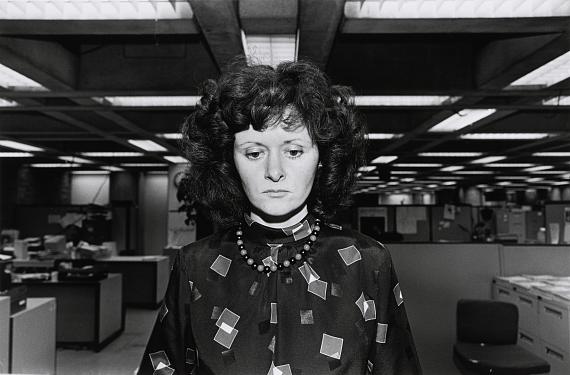
Boston, 1986
from the series MIT, Boston and Vicinity, 1985–1986
© Lee Friedlander / Courtesy Fraenkel Gallery, San Francisco and Luhring Augustine, New York
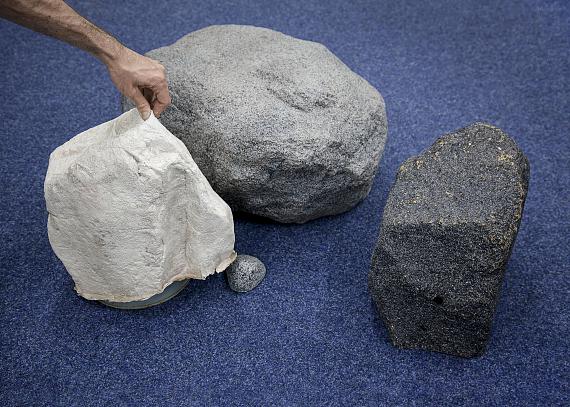
Hollow Stones, 2014
from the series Disguise and Deception – A Mimetic Exchange of Strategies for Make Believe
© Anika Schwarzlose
